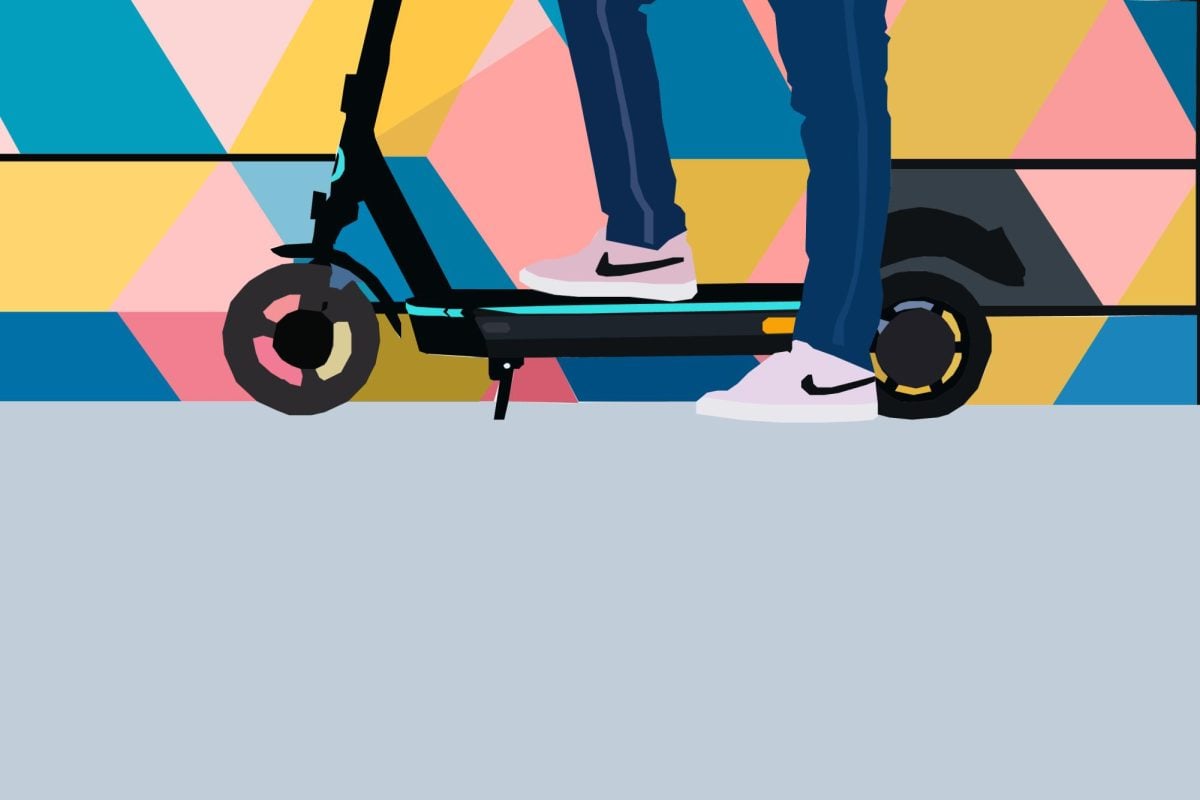When Medill junior Yinuo Wang moved off campus this fall, she said purchasing an electric scooter allowed her to cut down on her commute — sometimes she leaves her apartment just five minutes before class and still arrives on time.
But when the first snow of Winter Quarter rolled around, her scooter became less of a convenience and more of a safety hazard, according to Wang.
“That day was pretty horrific, as in I couldn’t really see where I was going because the wind and snow and rain was hitting my face,” Wang said. “Since that day, I stopped scooting.”
Communication junior Lianna Amoruso, who lives in downtown Evanston, said she stopped using her scooter in the winter to avoid falling on icy roads.
According to Amoruso, patches of ice on sidewalks and bike paths make it more difficult to navigate around pedestrians.
“People were trying to avoid the icy patches where they were walking, so if you’re trying to scooter around them, they are less likely to move,” she said. “It’s a lot less safe for people and scooters because everyone’s trying to go the same way.”
Amoruso said she felt that the poor road conditions defeated the point of her scooter. She said more consistent efforts by NU and Evanston to de-ice bike paths would make using her scooter more of an option.
More bike paths throughout Evanston could also help reduce chances of collision with pedestrians, Wang said. She recalled how pedestrians in downtown Evanston would often chastise her about safety when they saw her riding her scooter on the sidewalk.
“When I’m on the sidewalk, I slow down when there’s a pedestrian because that’s the least I can do,” she said. “But it’s still not safe enough.”
The top speed of most average scooters falls between 15 and 25 mph. For Wang, it isn’t fast enough to ride on the street, but it’s too fast to safely ride on sidewalks.
Electric scooters can also be high-maintenance in the winter, Amoruso said. Freezing temperatures and moisture can damage scooter batteries, so Amoruso said she stores hers indoors and brings it with her into classrooms instead of locking it to outdoor bike stands.
Bringing scooters to class can also be a precaution against theft — it’s one that Medill junior Lucia Shen takes seriously.
Shen said she has had her scooters stolen twice: once when it was parked outside her dorm overnight, and once in broad daylight, while she was in class.
“I actually called the police both times, and they filed a report for me and everything,” she said. “But still, they couldn’t find the scooter, or they didn’t have the time to find it.”
To prevent further thefts, Shen said University Police suggested she switch her cable lock out for a rigid U-lock, which is more difficult to break.
Despite their many challenges, Shen, Wang and Amoruso all said they would still recommend getting scooters for the convenience they bring in the warmer months. Shen is now on her third scooter, which she said cuts her commute time in half.
“It does save a lot of time and effort,” she said. “Once I got one, I just couldn’t go back to walking.”
Email: joyceli2025@u.northwestern.edu
X: @joyycee_li
Related Stories:
— University Police hold bike and scooter theft prevention session
— Rampant bike theft poses issue for Evanston residents, Northwestern students
— Evanston residents raise concerns about students riding on sidewalks







